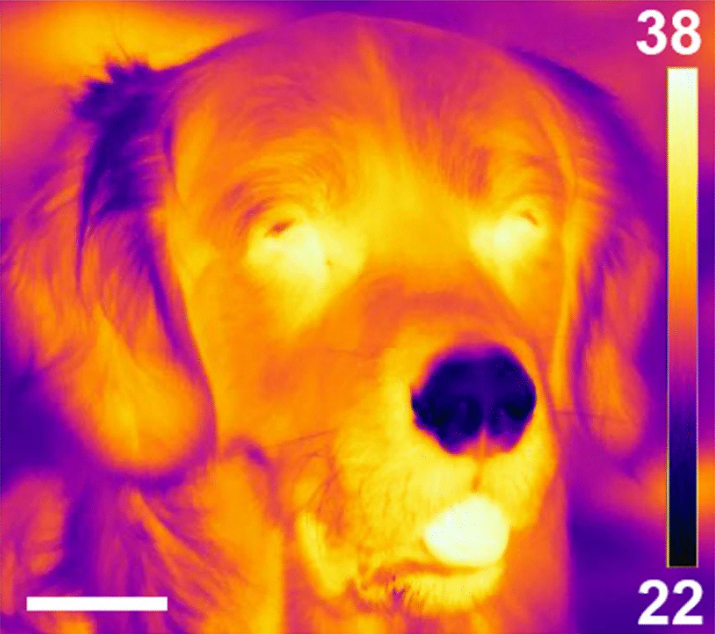We already know dogs are amazing creatures, and scientists just discovered another talent our canine friends seem to possess: they appear to be able to sniff out the heat of other animals through their cold snouts.
It's all apparently down to the rhinarium – that area of smooth, furless skin around the nostrils of most mammals. When it comes to dogs, that patch of skin is moist, cool, and packed with nerves, and can apparently sense weak thermal radiation.
This is a rare trait, with only black fire beetles, certain snake species, and the common vampire bat known to have this heat-sniffing capability – and they all use it to hunt prey.
 (Bálint et al., Scientific Reports, 2019)
(Bálint et al., Scientific Reports, 2019)
"Dogs are able to sense the thermal radiation coming from warm bodies or weak thermal radiation and they can also direct their behaviour according to this signal," biologist Anna Bálint, from Lund University in Sweden, told Reuters.
In one experiment, the researchers trained three pet dogs to choose between a warm object (heated to 31°C or 88°F) and an room-temperature object from a distance of 1.6 metres (just over 5 feet) - what the researchers considered to be suitable hunting distance.
The objects didn't smell and were covered in black electrical tape so that neither the dogs nor handlers could detect any difference between them. Still, all three dogs were shown to consistently pick the warmer option, the scientists report.
In the other experiment, warm or room-temperature objects were presented to 13 pet dogs of various breeds (including golden retrievers, border collies, and mixed breeds) while their brains were being scanned with an fMRI machine.
The left somatosensory cortex in the brains of the dogs, known to handle information coming from the nose, was more responsive to the warm objects than the neutral ones.
All of which indicates that dogs and vampire bats maybe the only two mammals we know about to share this skill – being able to sense weak hot spots giving off infrared radiation, using a specific part of the brain.
While pet dogs no longer have much hunting to do, the researchers reckon that dogs may have inherited the trait from the grey wolf (Canis lupus), an animal which very much needs to be able to sniff out warm bodies to find prey.
It's possible that other animals possess this same skill and we just don't know about it, the team behind the study says – and that could lead to a whole host of prey-predator relationships and predator hunting strategies getting re-evaluated.
Of course, this is only one paper, so more work needs to be done to confirm this skill exists. It's also not clear exactly how this radiated heat is being sensed, or if it is definitely the dog's rhinarium involved, but the experiments are suggestive enough to warrant further investigation into the heat-smelling abilities of dogs.
"It's a fascinating discovery," ethologist Marc Bekoff, from the University of Colorado, Boulder, who wasn't involved with the study, told Virginia Morell at Science. "[It] provides yet another window into the sensory worlds of dogs' highly evolved cold noses."
The research has been published in Scientific Reports.
